#savannahmonitor
Explore tagged Tumblr posts
Text
Care Guide: Savannah Monitor

Savannah Monitors (Varanidae – Varanus exanthematicus) or “Bosc Monitors” are what we would consider “expert level” pets, in fact, we would place most monitors in this category. These robust, mini-Velociraptors are more than just a handful to care for. Properly caring for a Savannah Monitor will take space, time, money and energy, a lot of it. They get very large; roughly anywhere between 3 to 5 feet in length (depending on gender and genetics), and will need significant investment into creating their enclosure. Here is everything you’ll need to know and consider before deciding whether to bring this intelligent, chaotic and rewarding creature into your home.
Savannah Monitors are notoriously the most frequently neglected reptile in the pet industry, most do not survive their first year of life in captivity. There is a mountain sized pile of bad care advice available online, and most of the reptile industry has greatly misunderstood these animals for half a century. Luckily, there are also many exceptional keepers out there who go the extra mile, reading into scientific journals, speaking to geography and science experts, and sometimes even getting on a plane to go fetch the data themselves. Those dedicated people have been vital in obtaining a detailed re-understanding of these fantastic, but complicated lizards.
Feeding:
Perhaps the biggest thing the reptile industry got wrong for so long-- treating all monitors alike, though they are the furthest thing from equal. Most large monitors do fantastic, even thrive on a diet of frozen-thawed rodents. For a long time, Savannah Monitors in captivity were being offered a rodent based diet, and no surprise, most of them died. We later learned just how susceptible Sav’s are to Gout and Fatty Liver Disease—FLD for short. When a Sav is fed a rodent exclusive diet, it receives far³ too much fat to reasonably process. When reptiles get fat, they don’t accumulate it under the skin (the way we do), they form fat inside their vital organs, limiting organ function to the ultimate point of failure. This means that an obese Savannah is in real distress and its life is at risk.

All that being said, Savannah Monitors do best on a diet of invertebrates, a lot of them. They will eat an assortment of insects like snails, crickets, superworms, grasshoppers, silkworms, roaches, giant mealworms, etc. Feel free to use packaged or canned feeders too for some variety that you might not be able to access live. ProBugs sells things like packaged scorpions, these can make a nice treat meal for your Sav and are safer to feed in comparison to the live counterpart. A baby Savannah monitor will need to eat daily, high calcium, low fat. An adult can be fed as little as twice a week, provided they are offered enough food per meal, use your judgement and watch how your animal carries their weight. Treat feeders can include hornworms, butterworms, waxworms, quail eggs, shrimp, etc. Feel free to read more into their dietary requirements to balance calcium and phosphorus levels. There are a lot of wonderful resources available including the Facebook group “Savannah Monitor Group” where they have compiled countless files analyzing and encouraging Sav care improvement, check out this dietary note for more clarification.
When feeding your Savannah Monitor, it is also extremely important to supplement their diet with vitamins and minerals. Each feeding, dust your feeder insects with a Calcium powder +D3. Once a week, you can swap out the calcium with a multivitamin powder. Proper supplementation protects your animal from life threatening diseases like MBD (Metabolic bone disease), Vitamin A deficiency (vision and skin issues), Gout and more.

Housing, Substrate, Humidity, Water:
Savannah Monitors are LARGE, and will require an accommodatingly LARGE enclosure. You will either need to commission a company/person to build something, or build it yourself, as these enclosures are not commercially available. The ideal space for a single adult Savannah, is roughly 8’x4’x4’, babies and juveniles can be kept in 40-gallons to 3’x2’x2’ enclosures while you are building their final home.
Furnish the enclosure with a couple of hiding places, ideally one on each end of the enclosure so that the animal has options depending on the temperature it feels most comfortable in. You may decorate with large, stable pieces of driftwood or cork bark, large pieces of slate and fake foliage. Though you can safely use real plants, monitors are not delicate movers and will most likely trample anything you decide to plant. They’ll destroy fake plants as well; it just takes longer. Remember to diligently secure any heavy décor items you choose to include, as a burrowing Savannah Monitor has the potential to knock things over, risking injury.

The substrate you choose, should be able to hold humidity, be easy to dig in, and capable of holding tunnel shape. The most popular mixture used with this species is a sand/soil mixture. However, there are many types available that you can mix and match to achieve a similar result. We use a mixture of cypress mulch, soil, sand, coco fiber, peat moss and sphagnum moss and find it suits the needs of the animal well, while keeping mess to a minimum. In the wild, Savannah Monitors live in African Sub-Saharan grasslands. They often dig burrows to hide out in, these burrows can reach 100% humidity, this helps them to shed their skin effectively. Aim to keep the enclosure around 60 to 80% humidity, fluctuating throughout the day. You should be able to achieve this by misting the cage daily and/or pouring some water into the substrate. Generally, there should be a period mid-day, where the enclosure dries out, this will maintain the animal’s respiratory health. Too much or constant humidity can be just as bad as too little humidity, finding the right balance and fluctuation is important.
**Note: Savannah Monitors shed their skin in patches, and not all at once. They shed pretty much constantly due to the length of the process. Do not peel any skin off the animal, as you can damage its scales by doing so. If you notice “stuck shed” that has been lingering for longer than the shed cycle, give your monitor a shallow, luke warm soak for about 20 minutes and wipe the softened skin away with a soft cloth. If it does not come off this way, add some wet moss or wet paper towels around the inside of the enclosure for added humidity.
Savannah Monitors usually always defecate in their water dish, it will need to be replaced once or twice a day to ensure your animal has access to clean, fresh water at all times. When choosing a water dish, pick one that your animal will be able to completely submerge their body in. For adults, this often means a large storage tub, as commercial ‘reptile branded’ water dishes are not large enough. Use a water de-chlorinator like Reptisafe in your animal’s water to remove any harmful impurities often found in tap water.

Heat and Light:
As is the case with most Monitors, Savannah’s need a lot of heat to properly digest meals and form bones the way they should. They will require a hot spot of around 130/140 degrees F, 120 F for juveniles. The hot spot should ideally have some sort of rock or slate beneath to maintain the temperature and provide access to belly heat. The ambient air temperature should be around 85 degrees F, while the coldest areas may drop as low as 75 degrees F. Having this range of temperatures available will assist your animal with thermoregulation. A hatchling enclosure can be heated with a single heat bulb, whereas an adult should be offered two heat bulbs on the basking site to disperse the concentration of heat. Adults kept with a single heat bulb will not be able to effectively warm themselves under one bulb. They often end up with back burns from sitting in the same spot, trying to warm their large, long body with a single heat beam.

Savannah Monitors will also do best when kept under a high level of UVB, 10.0 Desert or 14%. Many monitor keepers believe it is not necessary to use UVB lighting, due to the way they synthesize D3 and process calcium. We disagree with this and believe that UVB is absolutely vital to our diurnal monitor lizards, due to the way it stimulates appetite, energy and activity, and vibrant scale colour development. T5 bulbs (we like Arcadia) are the most effective UV lighting option available on the market, we strongly advise using them. It is best to choose a bulb that offers full coverage to the length of the enclosure, these bulbs need to be changed every six months to once a year as they run out of the chemical that makes them effective. As a cost saving measure (to avoid replacing bulbs when unnecessary), if you have the money to invest in a Solarmeter, we would highly recommend it. They run about $300 CAD, and have become a staple tool for maintaining our collection.
Taming, Sexing, Extras:
Savannah Monitors are highly intelligent reptiles, this makes them harder to bond with because they instinctively see you as a predator and are more than capable of defending themselves. Their defence mechanisms include a full set of sharp claws, teeth designed to lacerate flesh and a tail they know how to whip with accuracy. To get your animal to trust you will be a lengthy process, that can easily be thrown off track if you make the wrong move, but you can always restart. Trust building should be done gradually. Get your Sav used to your presence, let them know you’re safe by maintaining consistency. Have them slowly get used to you routinely bringing them food, changing their water, cleaning their enclosure, and speaking to them in a low voice.
There are many routes you can take from there, some use food as a motivator for contact. Others like to target train feedings and keep handing contact separate to avoid accidental food response bites. Whichever route you choose, take it slow and be consistent. Your monitor will calm down and begin to regard you as a safe person they can trust over time. Try not to handle your animal while it is cold, they’ll be calm because they’re too cold to move, but they’ll also be terrified. If you focus on keeping them warm while interacting (in-cage interactions, brief out-of-cage interactions), they will feel safer knowing they still have the energy to defend themselves if they need to.

**Note: Try to work with the animal a lot while it is young, and regularly as it grows to maintain your bond. An animal that trusts you can easily turn to one who doesn’t if it isn’t handled for two months. Get your Savannah to a point where it’s unlikely to bite you while it is still too small to do significant damage, an adult monitor bite is no picnic and can be very serious.
Sexing monitors is not easy, often you won’t actually be able to tell for sure until you see an adult hemipenal eversion while it defecates (usually in water). Sometimes you can tell by the appearance of the adult animal by looking at the head shape (males have bigger heads, more bulbous foreheads, and larger nostrils), the sheer body size, or looking for male signifying grease patches on the underside of the back feet. If you have no luck with any of that, blood tests performed by a veterinarian are the most accurate way to know for sure.
You’ll find a lot of people online claiming Savannah Monitors are horrible pets, they’re really not. They can make absolutely wonderful, fulfilling, intelligent pets for the right person. You have to fully commit yourself to providing ample time, energy, investment and patience if you want it to work. Once you have the husbandry down, and the taming under control, you’ll probably end up with a very personable, entertaining, dog sized lizard. It takes a lot of determination but it’s so worth it to end up with the animal you’ll get in the end. We love our boy, and he tolerates us but loves food. If it’s affection you’re after, you might consider getting a dog instead.

#care guide#care guides#careguide#careguides#savannahmonitor#savannahmonitors#savannah monitor#savannah monitors#varanid#varanidae#varanus#varanusexanthematicus#varanus exanthematicus#monitor lizard#monitorlizard#lizard#lizards#african animals#reptiles#reptile care#reptile husbandry#pet industry#redeyereptile#redeyereptiles#red eye reptile#red eye reptiles#care-guides#care_guides
8 notes
·
View notes
Photo

Into the deep #dinosaur #ig_australia #herplife #dragonsofinstagram #wildlifeplanet #earthfocus #focusaustralia #australia_oz #natgeotravel #monitorlizard #herpsofinstagram #dragons #varanus #savannahmonitor #ourplanetdaily #animal #australiazoo #varanuskeeper #monitorlizardsofinstagram #lacemonitor #australianlizards #australianreptiles #australiabushfires #photooftheday #bellphase #boscmonitor #naturegram #jurassic #nature_shooters #livingart https://www.instagram.com/p/CJ8RxbWJPn6/?igshid=n0sl84p48pnv
#dinosaur#ig_australia#herplife#dragonsofinstagram#wildlifeplanet#earthfocus#focusaustralia#australia_oz#natgeotravel#monitorlizard#herpsofinstagram#dragons#varanus#savannahmonitor#ourplanetdaily#animal#australiazoo#varanuskeeper#monitorlizardsofinstagram#lacemonitor#australianlizards#australianreptiles#australiabushfires#photooftheday#bellphase#boscmonitor#naturegram#jurassic#nature_shooters#livingart
2 notes
·
View notes
Text

I’m crying, y’all 😂😂😂😂
#monitors#reptilekeeper#reptilesoftumblr#savannahmonitor#reptiblr#reptiles#animals#varanus exanthamaticus#crocs#gators#croc#crocodile#millionsofyearsofevolution#imdying#toofunny
540 notes
·
View notes
Video
instagram
Ubusuku is not a fan of tickle time. Lol #savannahmonitor #savannahmonitorsofinstagram #reptiles #reptilesofinstagram #reptilecommunity #Varanusexanthematicus https://www.instagram.com/p/B-c33kABVOa/?igshid=hw9ml7o934bn
#savannahmonitor#savannahmonitorsofinstagram#reptiles#reptilesofinstagram#reptilecommunity#varanusexanthematicus
1 note
·
View note
Text


My grumpy little dragon allowing a brief cuddle.
Monitors are smart, and cute, but they are not “scaly dogs”, though, some of their mannerisms are similar. Just when you think you may have a reptile dog, they will remind you that you do not. They are amazing animals but not to be taken lightly. They desire space, and respect and are good motivated like no other creature on this earth.
From my experience with this animal, I know that they do not show emotion in ways that most do. They do however, show gratitude, they get excited for many things( not just food), they do enjoy a warm snuggle here and there, they have variying waves of body language that can tell you how your day is going to go within the first 5 seconds of interacting with them. They are not a fan of isolation as most are lead to believe. In fact, they have a very complex social structure with their own, and do bond in some way. They enjoy attention as much as they enjoy their space. Their claws are worse than little devil kitten daggers of pain and suffering. They are curious and intuitive. Delta often jumps to my shoulder from his enclosure and wraps his tail around my neck for support.
They are amazing creatures and a pure joy to work with. Despite millions of years of instinct telling them that we are dangerous, we can gain their trust, and befriend them in a way. Go slow, they will not reward impatience. It’s taken a year to gain Delta’s trust. He knows I am his caretaker, and I think he appreciates me to some degree. I hope 😂
#dragons#monitor mom#water monitor#exanthimaticus#varanus salvator#varanus exanthematicus#urban dinosaur#the urban dinosaur#modern dinosaur#varanus#varanids#varanidae#deltathemonitor#bosc monitor#savannahmonitor#savvy
2 notes
·
View notes
Video
Just keep swimming, Just keep Swimming Please follow our Instagram Acct and Add our Facebook page link in Bio ————————————— 🐾🐊 🐢🐍🕷🦂🦀🐠🐅🐆🐝🦉🦅🦑🐡🐙🐋🐫🦏🦛🐘🦍🦓🦒🦘🦜🦝🐾 ————————————— #easternexotics #adventure #adventureawaits #animal #animallove #animallovers #savetheanimals #wildlife #nature #environment #wecanallmakeadifference #savetheenvironment #nonprofit #nonprofitorganization #fundraiser #alllivesmatter #love #swim #savannahmonitor #lizard #reptile #monitorlizard https://www.instagram.com/p/B2ZLAeihjBq/?igshid=1cwy1fsyv2wts
#easternexotics#adventure#adventureawaits#animal#animallove#animallovers#savetheanimals#wildlife#nature#environment#wecanallmakeadifference#savetheenvironment#nonprofit#nonprofitorganization#fundraiser#alllivesmatter#love#swim#savannahmonitor#lizard#reptile#monitorlizard
1 note
·
View note
Photo

Morph is so handsome 🐊 #morph #savannahmonitor #reptiles #lizardqueen #dinosaur #tokyosuicide https://www.instagram.com/p/Bzb9Rk_nRbNPUS7OaBLtcIM_kR6dYxKDY8_N8Q0/?igshid=z6lub15xr8a0
1 note
·
View note
Text

Lazy sundays...
1 note
·
View note
Photo
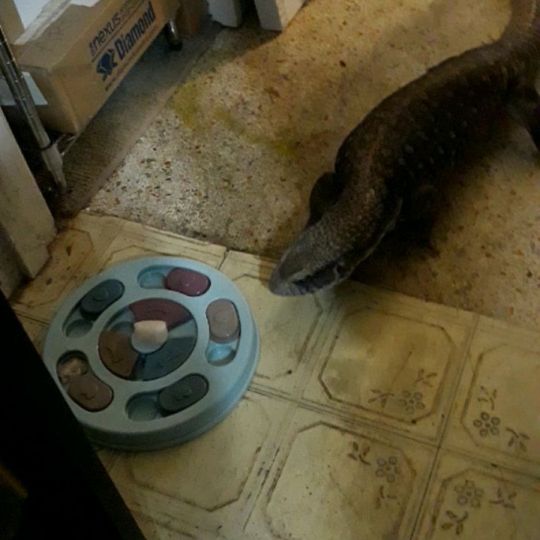
We don't have a puppy, but we do have our scaly cat, Clawdius. Follow him at @clawdiusthelizard for more shenanigans. Feeding him up before we head to @sinisternightsunlimited Next weekend in Miami. #nationalpetday #kb4people #eerieflorida #hellviewcemetery #savannahmonitor (at Hellview Cemetery) https://www.instagram.com/p/CTH90LnMwvh/?utm_medium=tumblr
0 notes
Photo

Baby sav savs are in!! Aren’t these guys soo freakin cute!?!?! #paintedreptile #losangeles #818 #310 #reptilestore #reptileshop #savannahmonitor #monitorlizard #reptilesofinstagram #lizardsofinstagram (at Los Angeles, California)
#818#lizardsofinstagram#monitorlizard#savannahmonitor#losangeles#reptilesofinstagram#reptilestore#paintedreptile#reptileshop#310
8 notes
·
View notes
Photo

Foster kaiju has become permanent son.
1 note
·
View note
Text





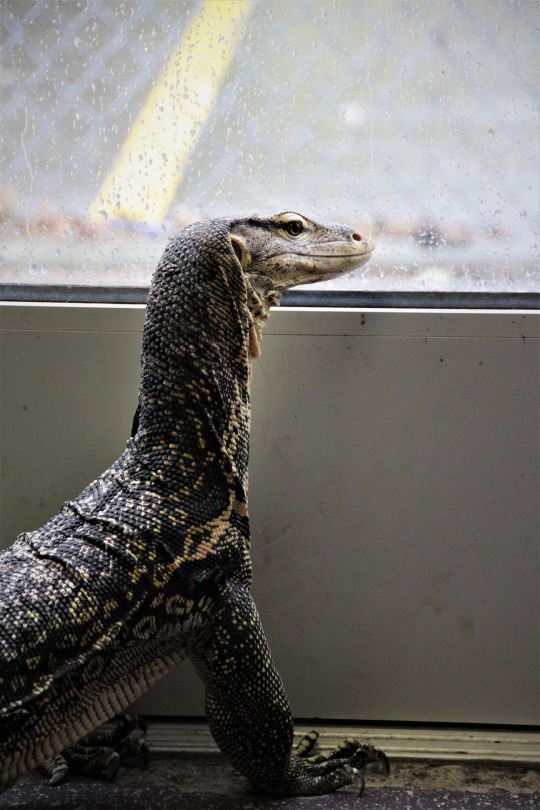
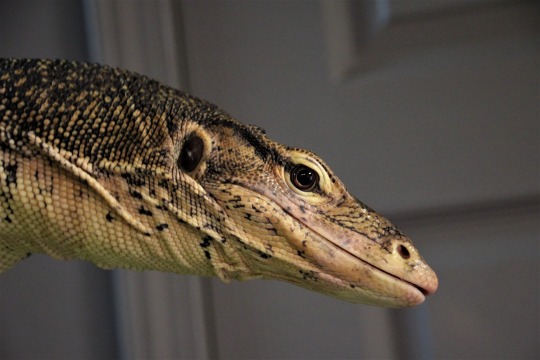
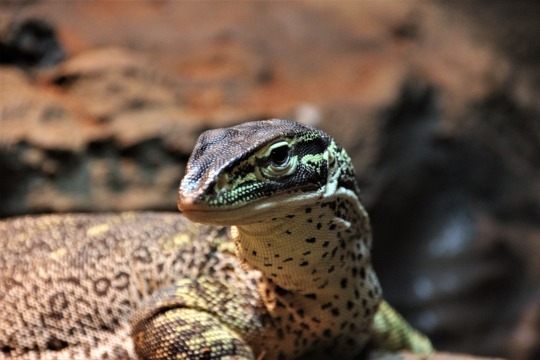

Dragons are Dragons...these are dragons.

This creature has four legs and no wings.
People call this creature a “dragon”? …..Then it’s a freaking dragon.

This creature has two legs and four wings.
When the source material calls it a “dragon”….. it’s a freaking dragon.



These creatures have four legs and two wings.
When the source materials designate them as “dragons”…… they are freaking dragons.





These creatures have two wings and two legs.
When the creators and adaptors of these creatures designate them as “dragons”……
They are freaking dragons.
(that last one, Smaug, is also often referred to as a “drake” and a “wyrm” by the source material, as well! In the books he has four legs, not two– but this was changed so he could he more expressive, using his wings as hands.)
The creators and adaptors of these source materials all had something called “creative freedom.” Sometimes, stifling peoples’ creative freedom can be annoying to them. Condescending to people with claims that things must fit into a fictional set of labels of your choosing often has unfortunate results.
For instance, you can refer to that last set of creatures as “wyverns” all you want. Whether you see that category as a “type of” dragon, or a different creature altogether– that’s your choice. No one can stop you!
However
If I refer to one of them as a “dragon”, and you say, to my face: “…..Actually, that’s not a dragon, it’s a wyvern”…
I will promptly shove you, and your entire family, into a locker.
This has been a PSA.
#dragons#httyd#smaug#harry potter#game of thrones#dragonheart#eragon#monitor mom#asian water monitor#varanus salvator#varanids#savannahmonitor#bosc monitor#varanus exanthematicus#exanthimaticus#sudanplatedlizard#platedlizard#lizards#the urban dinosaur#dragons are dragons#fight me
8K notes
·
View notes
Text
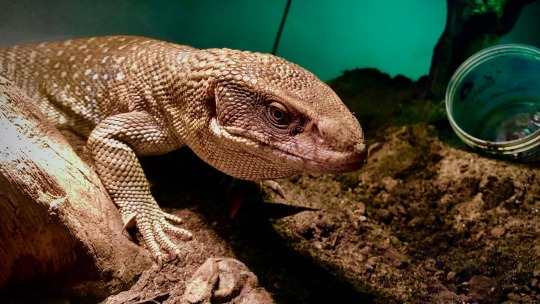
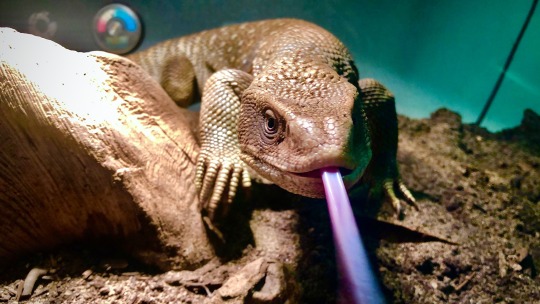


Haven’t posted photos of the Beasty in a while
#monitors#reptilekeeper#reptilesoftumblr#savannahmonitor#reptiblr#reptiles#animals#varanus exanthamaticus#plated lizard#lizards
6 notes
·
View notes
Video
instagram
Shedding and miserable. :-( #savannahmonitor #savannahmonitorsofinstagram #reptiles #reptilesofinstagram #reptilecommunity #Varanusexanthematicus #reptilesarelife #reptilesaspets https://www.instagram.com/p/B7Ui5O2BDgS/?igshid=1szq1ctxvyeqi
#savannahmonitor#savannahmonitorsofinstagram#reptiles#reptilesofinstagram#reptilecommunity#varanusexanthematicus#reptilesarelife#reptilesaspets
2 notes
·
View notes
Text

A savannah monitor/Drogon cross fan skin for the raptor mount in Guild Wars2
#guild wars 2#path of fire#raptor mount#guild wars art#fanart#video games#drogon#game of thrones#dragons#savannah monitor#savannahmonitor#exanthimaticus
4 notes
·
View notes
Photo

Monitor lizards are thought to have originated in Asia 65 million years ago. #dinosaur #ig_australia #herplife #dragonsofinstagram #wildlifeplanet #earthfocus #focusaustralia #australia_oz #natgeotravel #monitorlizard #herpsofinstagram #dragons #varanus #savannahmonitor #ourplanetdaily #animal #australiazoo #varanuskeeper #monitorlizardsofinstagram #lacemonitor #australianlizards #australianreptiles #australiabushfires #photooftheday #bellphase #boscmonitor #naturegram #jurassic #nature_shooters #livingart https://www.instagram.com/p/CKpw5LSsTW_/?igshid=6ykq0utn08b9
#dinosaur#ig_australia#herplife#dragonsofinstagram#wildlifeplanet#earthfocus#focusaustralia#australia_oz#natgeotravel#monitorlizard#herpsofinstagram#dragons#varanus#savannahmonitor#ourplanetdaily#animal#australiazoo#varanuskeeper#monitorlizardsofinstagram#lacemonitor#australianlizards#australianreptiles#australiabushfires#photooftheday#bellphase#boscmonitor#naturegram#jurassic#nature_shooters#livingart
0 notes